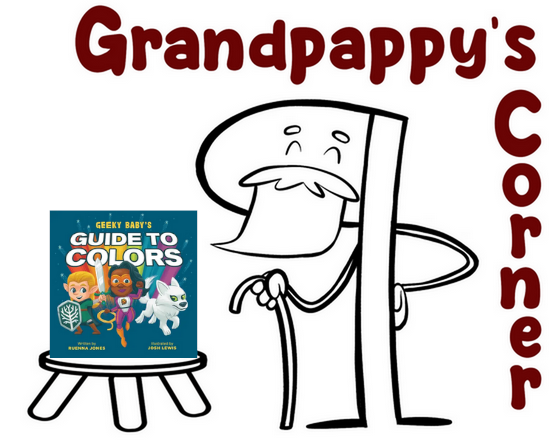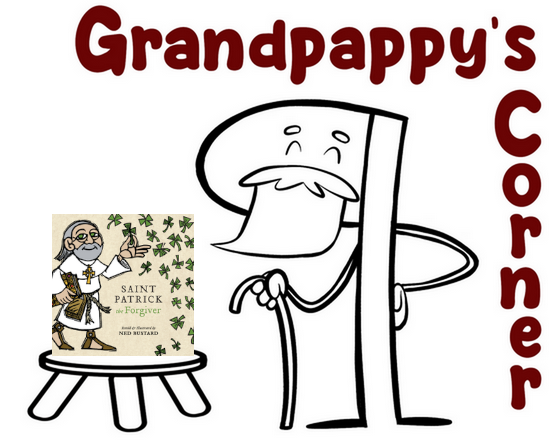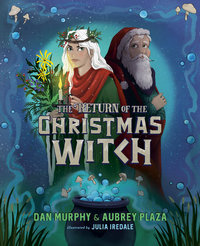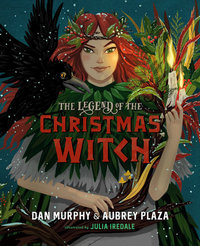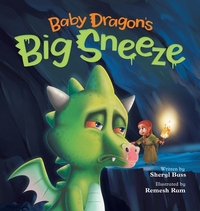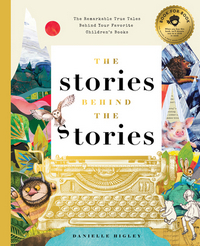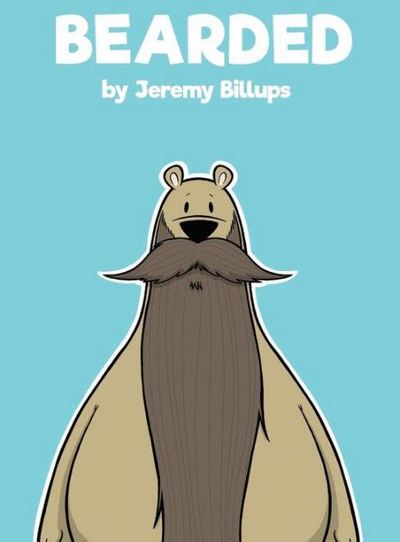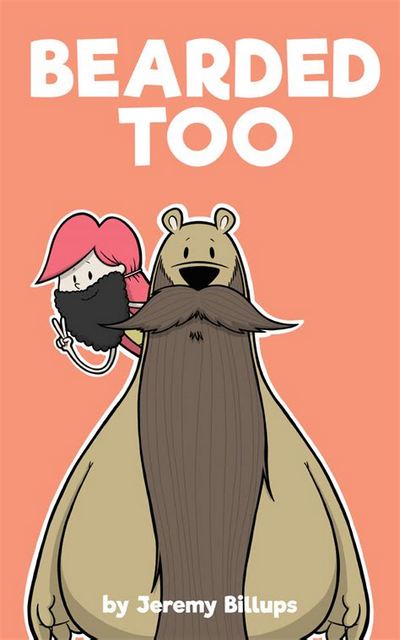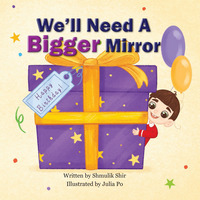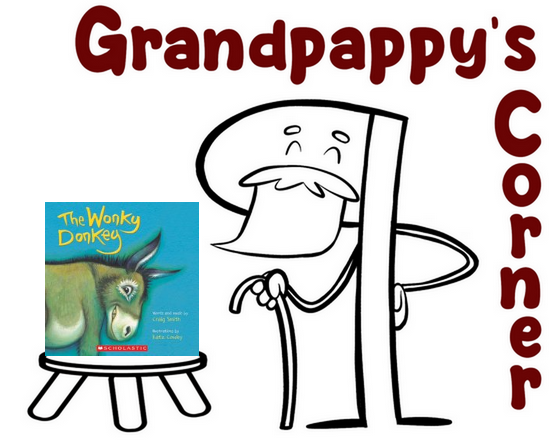
The Wonky Donkey
by Craig Smith, Katz Cowley (Illustrations)
DETAILS: Publisher: Cartwheel Books Publication Date: December 29, 2020 Format: Board Book Length: 21 pgs. Read Date: March 8, 2023

What’s Wonky Donkey About?
Lifted from the lyrics of a children’s song, the book starts:
I was walking down the road and I saw…
a donkey,
Hee Haw!
And goes on from there to describe this unfortunate equine in more and more detailed (and ridiculous) ways–starting with its three legs, going on to describe its taste in music, coffee consumption, attitude, attractiveness, and so on.
Let’s Talk about the Art for a Minute
Katz Cowley is fantastic. The natural world and physical objects are presented in a great realistic fashion–heightened just a bit. The titular donkey and a bird that shows up in every scene, however, are a goofy cartoonish exaggeration of that fashion
I don’t know who decided to give this donkey a prosthetic leg–but it only comes up in the illustrations, so I’m going to give Cowley credit for it. It’s a great detail on many levels.
The expressions on the bird and donkey are the stars of the show–better than the words (by a crooked hair). I don’t know how a child can look at them and not want to stare. Or not wanting to pick up the book for another reading session.
Especially when a child is the age of the target audience, the adult reading the book is going to see themselves in the coffee-less expression of the donkey on the page talking about the caffeine deprivation. So everyone wins?
You can see some of the art, and learn more about the book, on Cowley’s website.
How is it to Read Aloud?
Ohhh boy. This is going to be hard to convey. First, it was only after I’d read this that I took the time to track down the song, but I couldn’t help but get a sing-songy cadence and voice as I read it. I also found myself talking faster and faster as I went through the book–like there was this unconscious effort on my part to spend the same amount of time reading each pair of pages–like a snowball rolling downhill, growing bigger and getting faster. This is great and all, but it’s also kind of a workout of both stamina and verbal dexterity.
You can’t help having fun with these lines–even as they build up and repeat like the 12 Days of Christmas. Really, try being expressionless or frowny while saying “He was a hanky-panky crank stink-dinky lanky honky-tonky wink wonky donkey.” You can’t, can you?
You might need to start using a spirometer before cracking this thing open though. As fun as it is, you’re going to end up getting requests for encores, and after 2-3 readings in a row, it’s going to lose a little bit of its charm. So keep something else around so you can switch to it for a minute or two before having to come back.
(between you and me, the song isn’t my style. I really hope the Grandcritter doesn’t discover it, because it feels like the kind of thing that’d you’d have to listen to 30 times a day–like that ditty about an infant scaleless predatory fish)
So, what did I think about Wonky Donkey?
A couple of weeks ago, my wife was telling a friend about our prep work for grandkids, including all the books we’re starting to stockpile. Once she got over being aghast that we’d never heard of The Wonky Donkey, she insisted that we fix this. We dutifully complied and it’s either one of the best moves we’ve made or one of the worst (see what I said above about reading it).
Joking aside, this is a great book for the intended age group. I’m going to have to do a deep dive into both the work of Smith and Cowley.
The other thing my wife’s friend told us was to get the board book–and she was right again. Parents/Grandparents/Etc. Do NOT get the paperback or hardcover. If the child(ren) doesn’t/don’t like the book, you’ll have spent too much money. If they do like the book (the more likely outcome), they will destroy it. It’s going to demand the number of re-re-re-re-reads that anything else won’t hold up to it. It’s also going to end up being one of those books a kid is going to carry around with them and flip through themselves–a lot. Paperbacks/hardcovers will not survive the gumming, accidental ripping, deliberate ripping, and overall expressions of toddler love that are so destructive.
I can’t see where this doesn’t become a tongue-tying obsession. The book you know the kid will love, you enjoy (the first few times a day you read it), you end up memorizing without trying to and just hope your lung capacity holds out during. It’s fun, it’s goofy, and it’s the kind of thing you’ll look back on in fondness.

This post contains an affiliate link. If you purchase from it, I will get a small commission at no additional cost to you. As always, the opinions expressed are my own.
![]()


